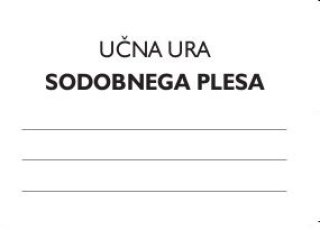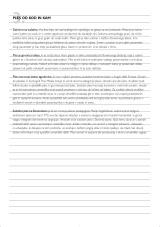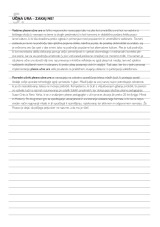What is a contemporary dance lesson?
• A tool for getting to know the idea, practice, and procedures of the art of dance.
• A modular, multimedia, informative, humorous, experiential, and participatory activity.
• An innovation in the area of education which can be gradually and actively included in other contents and learning procedures.
The format of the dance lesson is conceived as a set of dance contents of different scopes, for different opportunities and spaces. Presentation formats include both practical demonstrations and theoretical insights into contemporary dance in the form of “tools for use”.
Where is the dance lesson held?
Dance lesson can be adjusted to different situations and forms of teaching (cultural education lesson, culture day, compulsory and optional electives) and spaces (school's gym, classroom, small stage, big stage, school lobby, local stage, Dance Theatre Ljubljana, Old Power Station Ljubljana, Puppet Theatre Ljubljana…).
Who is it intended for?
The simplest answer would be, for any body. The presentation document comprises contents that discuss contemporary dance as the 20th century art phenomenon and is devised as a get-to-know contemporary dance tool kit.
Aims of contemporary dance lesson project are:
- Building sustainable cooperation between experts from the area of dance and professionals from educational institutions who would connect contemporary dance with other educational contents.
- Formation of a multilayered project designed to be adjusted to different learning situations and formats (cultural education lesson, culture day, compulsory and optional electives).
- Active cross-influence and upgrade of the existing educational contents and acquisition of new knowledges through the experiential dimension of learning.
- Presentation and acquisition of knowledge about contemporary dance as an art form.
Dance lesson contents can be directly linked both to dance as an art form and to school contents (in connection to topics covered by other subjects), while at the same time they can also be a humorous and didactic critique of popular culture, which could be achieved by seeing and comparing popular and art contents. In an area as general as dance, such a wager could be particularly interesting for analysis, as dance is mainly always bound in both the area of popular as well as alternative culture. As a non-verbal form of activity, dance is also an area that offers greater comparability of the Slovene dance scene with the wider European context, which is something other art areas don’t offer (firstly because of their linguistic limitations). For this purpose, the aim of the dance lesson is to achieve a greater level of understanding and critical reflection on not just dance as a medium but also on generally accepted social norms and forms that become visible and tangible through dance. This will be achieved also because the focal point of the dance lesson implementation process will be on practical realisation of workshops and active participation.
Indirect effects of the dance lesson are related to general awareness of the body. The increased use of technology has resulted in the fact that the youth increasingly understand their bodies as mere “attachment” to the head. Wholeness is a requirement for the development of young people; however, this cannot be achieved if the body is not fully integrated. Competences gained with the integration of movement in learning processes would also indirectly affect and enhance understanding in other areas of learning, which has been proved by dance pedagogue Susan Griss from New York (in her book Minds in Motion). On the other hand, the idea is to encourage creativity and create an educational format which would directly address the young and encourage them to think, discover, and act in a responsible way. It was Picasso who already said that he did not understand bird’s singing but that he liked it.
For more informations contact us:
info@emanat.si
The project is prepared by: Maja Delak, Nina Meško, Petra Pikalo in Andreja Kopač
Production: Emanat
Financially supported by: City Municipality of Ljubljana, Ministry of Culture RS






